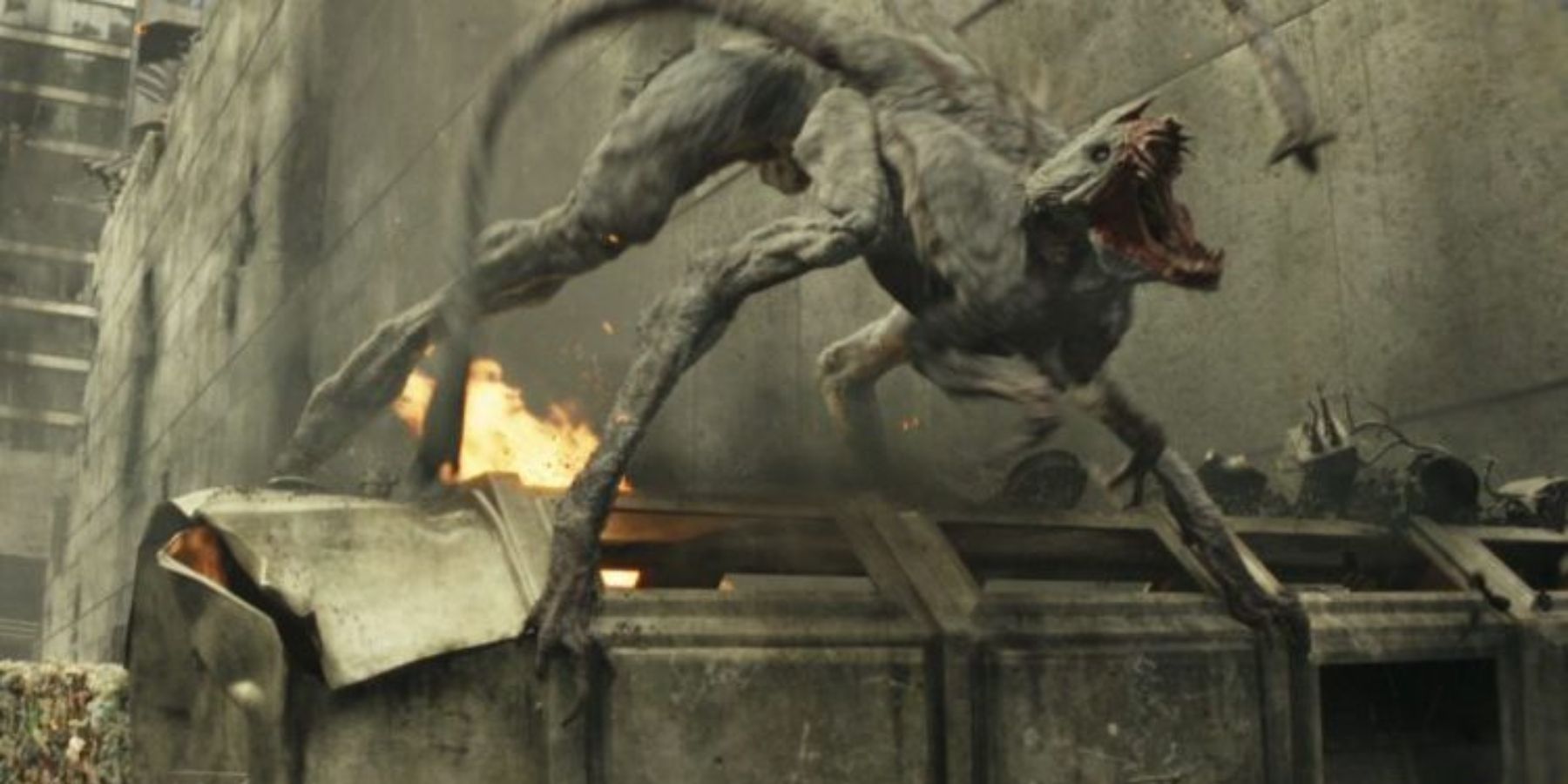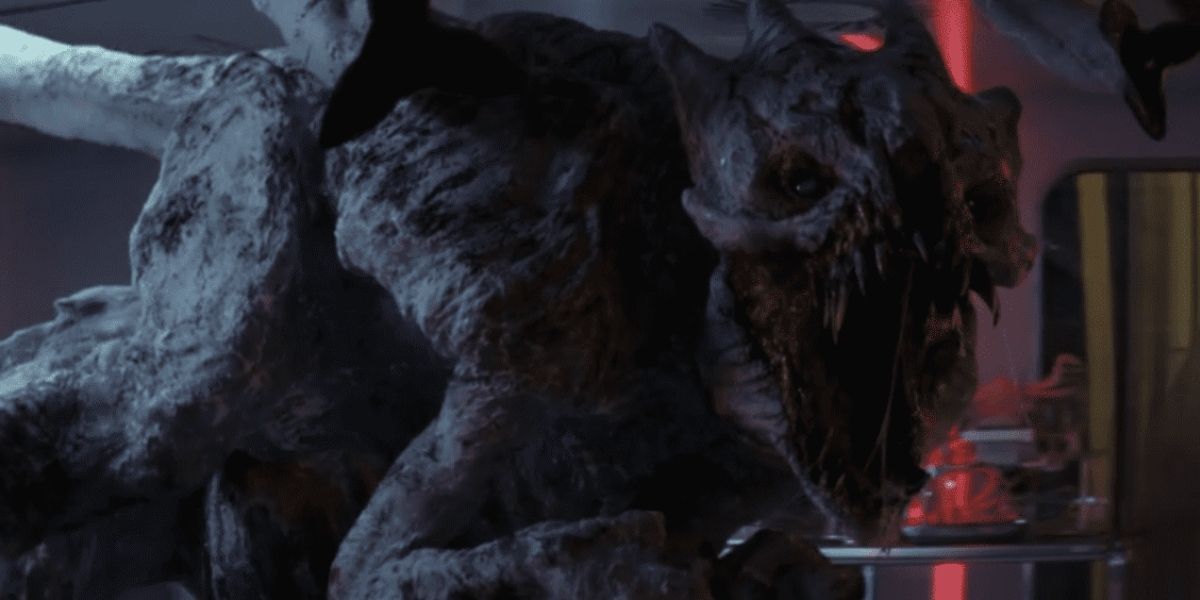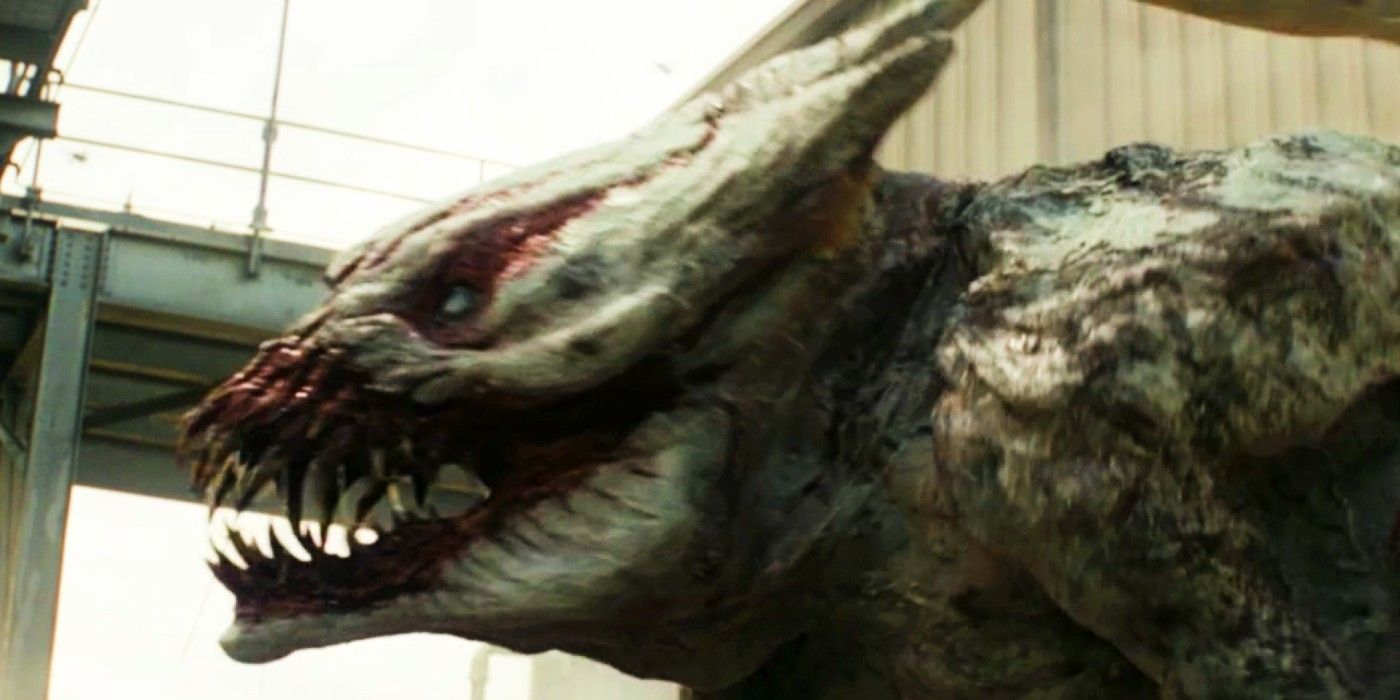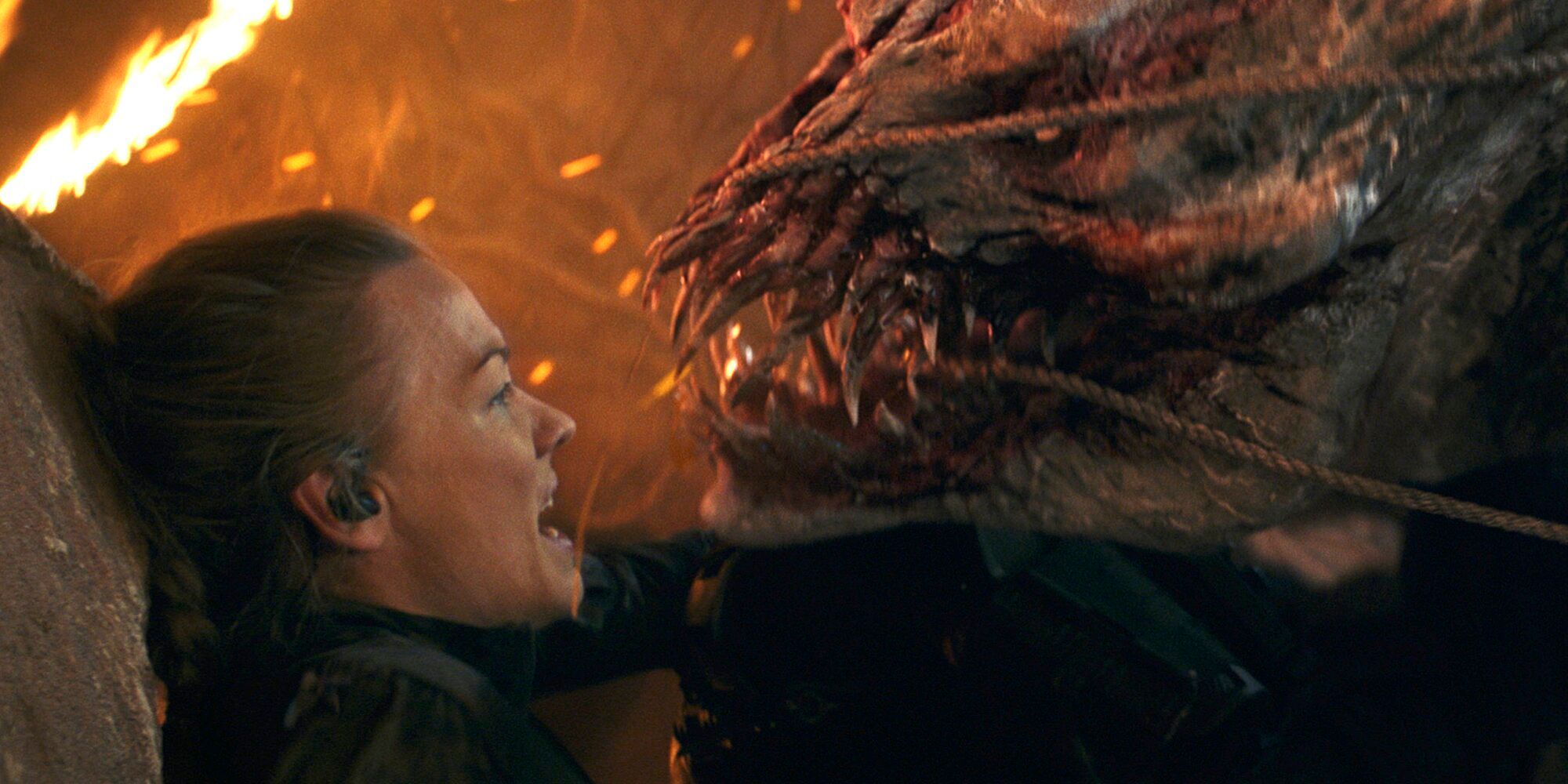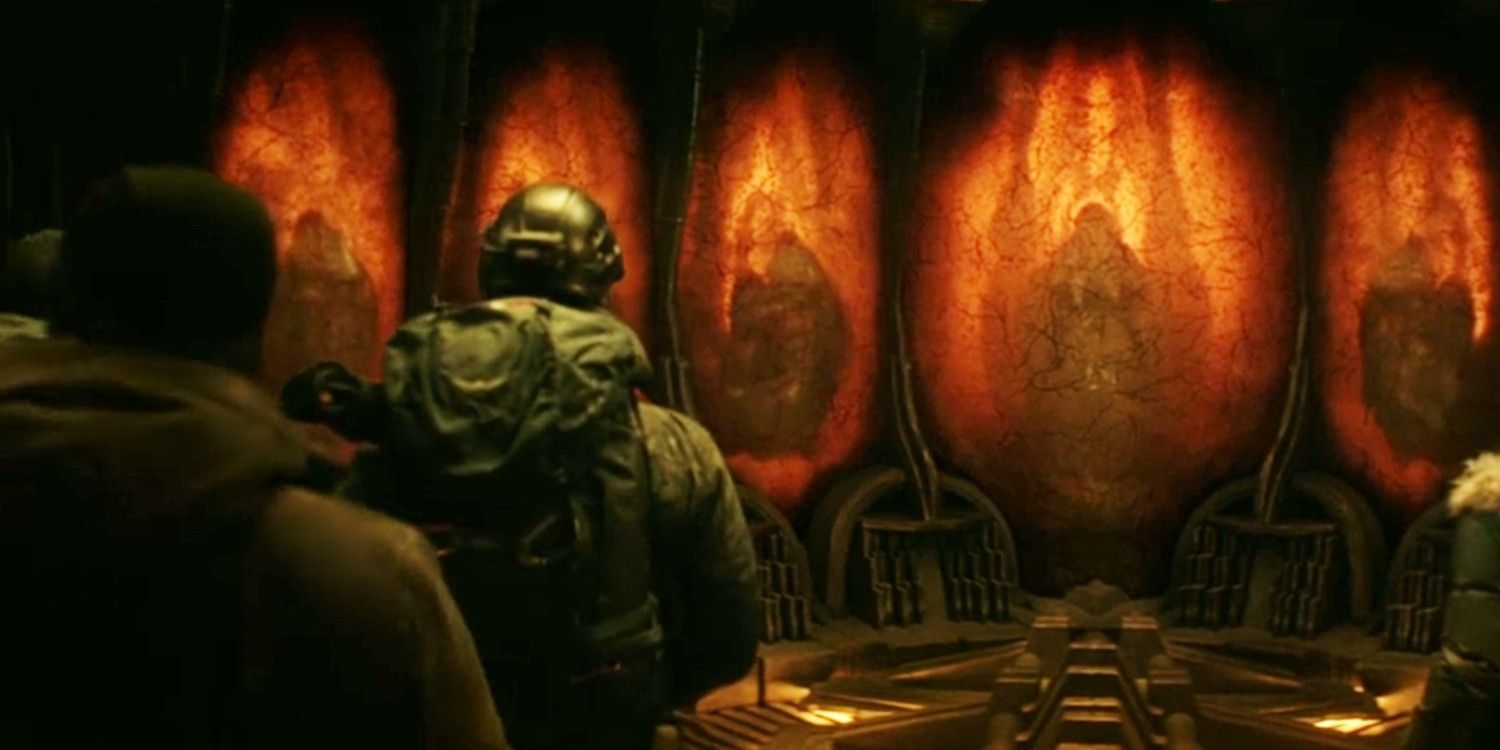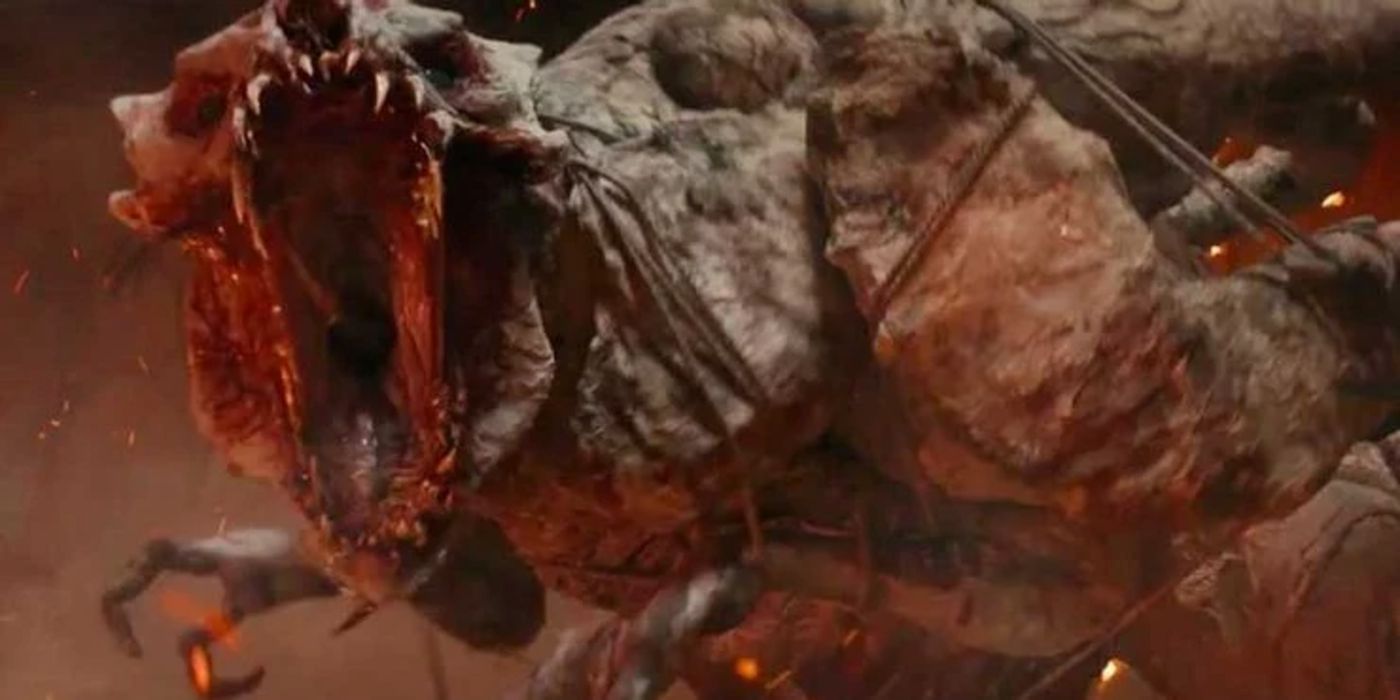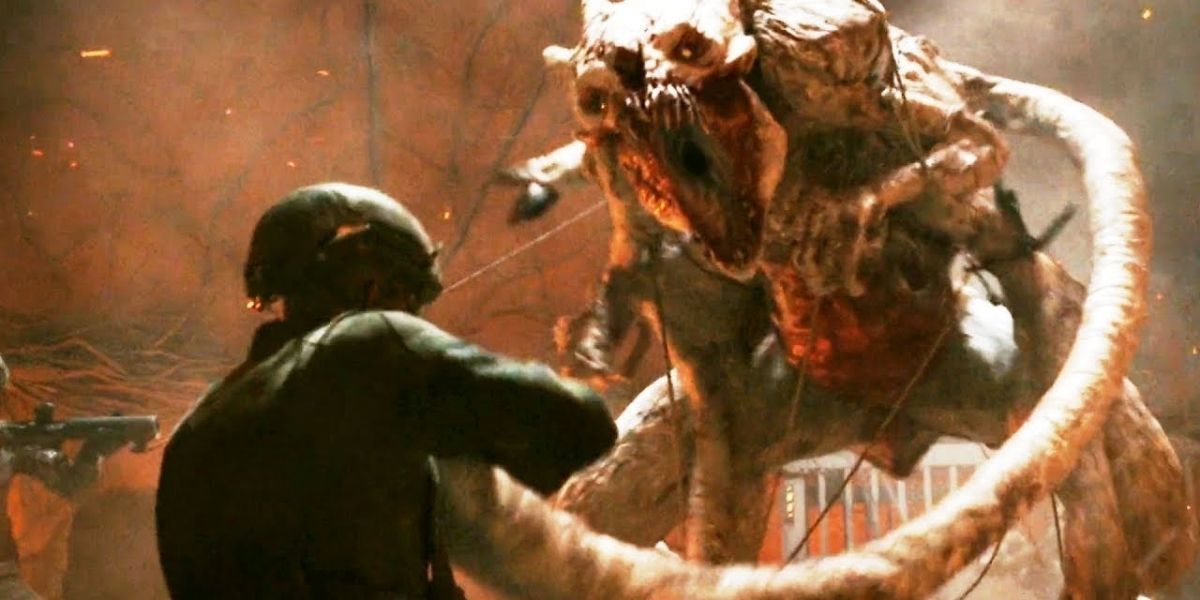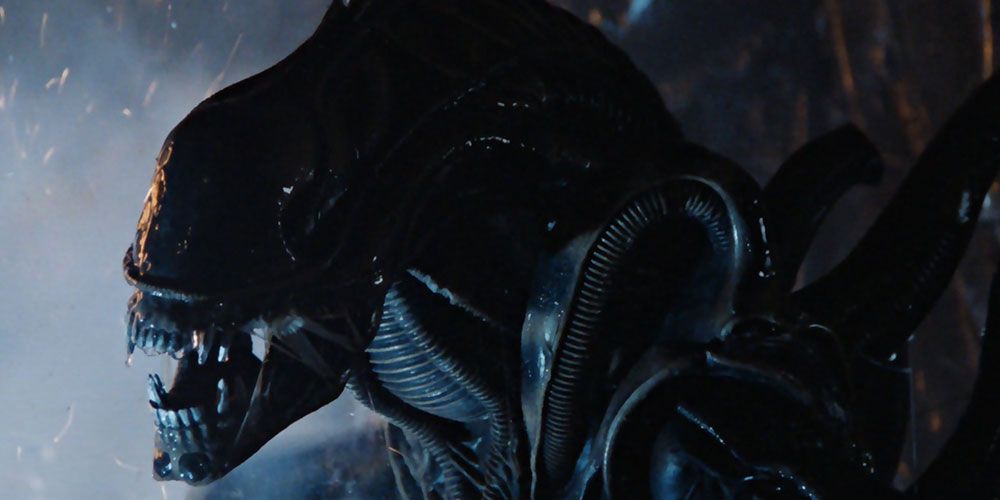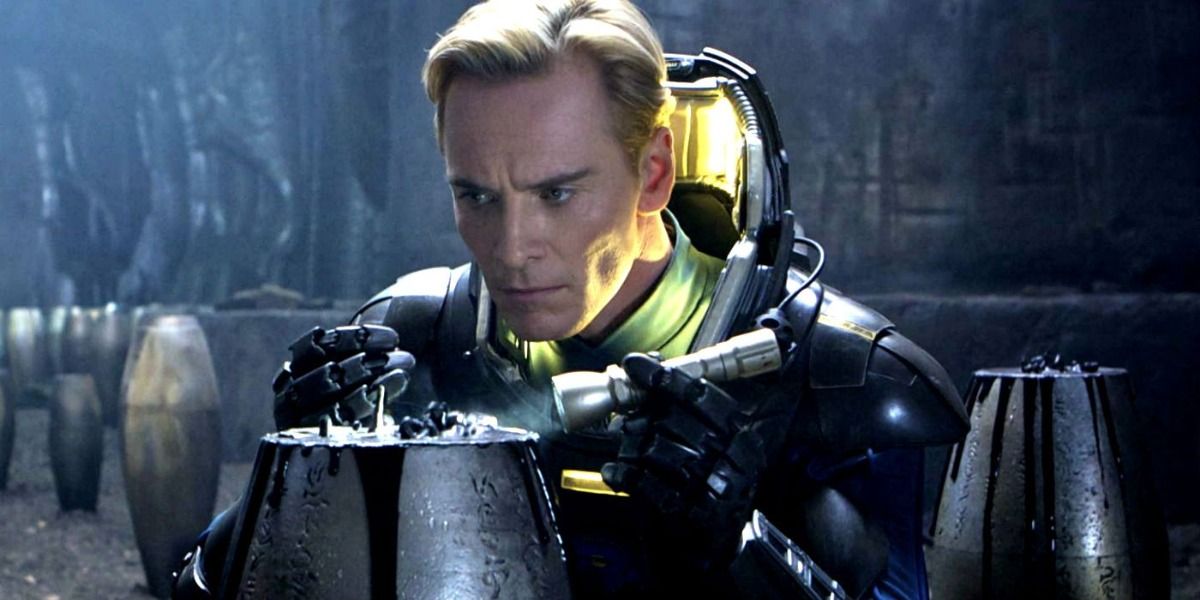Released on Amazon Prime early in July 2021, The Tomorrow War is an indulgent nod to classic Sci-Fi. This well-executed time travel meets alien invasion flick, starring Chris Pratt, features uniquely strange aliens. There is no hint of what the creatures look like before Pratt's character, Dan Forester, is sent to the future. Even then, Director Chris Mckay uses a few Hitchcock-like techniques to build up suspense before the first true glimpse at the aliens. The suspense, coupled with waiting a full forty-five minutes into the movie before seeing what the aliens look like, gives these nightmare fuel creatures a much bigger impact.
Called Whitespikes because of the deadly spikes that shoot from their tentacles, the aliens have a lot going on. Their details are well blended into the plot and with such a fast-moving story it's easy to miss some of the things the movie highlighted about the Whitespikes.
They Can Glide
While trying to retrieve a cornered female Whitespike, Forester and his future daughter, Muri, are set upon by a swarm of males. In a desperate attempt to protect the colony's queen, the males launch themselves off a cliff at the helicopters hovering near the nest entrance. Instead of plunging straight down to their deaths, the aliens spread their arms to reveal a flap of skin that catches air, allowing them to glide like a flying squirrel.
This is the only instance in the movie where the gliding is featured. That specific trait makes them one step more dangerous than already stated by the characters. It's quite jarring to witness, but blink and you miss it.
They Are Inspired By Termites
In the staircase of the lab, when the Whitespikes are first revealed, they are shown to be white, almost grossly translucent creatures with bulbous bodies. According to SYFY.com, the movie's creators didn't just use wolves and pack animals for inspiration, but termites and other types of insects as well.
Their swarming and instinct for species survival were purposely insect-like; designed to emulate an ant or termite colony in how they move. Their communication took inspiration from insect colonies as well. Instead of fighting each other for food, they work together to ensure the survival of the species.
Extremely Durable
It is immediately evident that like all of the scariest aliens, the Whitespikes are hard to kill. The brief boot camp Dan Forester experiences before being sent into the future states they are only vulnerable in the neck and throat. The alien's vulnerable spots are brought up in the heat of battle a couple more times through the movie. A lot of details were left out, to create a sense of suspense as the audience discovered each one for themselves; details the movie characters would have appreciated knowing before being tossed into battle.
One detail they don't mention is the extremely hard plated sections on their heads and backs that aren't just hard to penetrate but are completely bulletproof. At one point in the movie, a Whitespite turns its back to protect itself when Charlie attempts to empty an entire clip into it. The bullets bounce off harmlessly. They also use their extremely hard head plates as a battering ram to knock over several military humvees.
Instinct Driven
Originally, the future Muri states they had to be very intelligent to arrive on earth without ever showing up on radar. In direct contradiction of the statement, the Whitespikes act only with the intelligence of instinct. The males are extremely protective of the rare females, as they are interested in the continued survival of their species. They can smell blood a mile away and are immediately attracted to it, like ants to a picnic. The best alien movies always take inspiration directly from nature.
Whitespikes are always hungry. They swarm across the planet like a plague of locusts; not looking to conquer, but to feed. Their instinct to survive is the only thing driving the species, their sheer numbers a ploy to beat the odds. Luckily, human's drive to survive has always been a little bit stronger.
Cold Sends Them into Hibernation
When Forester comes home he feels like he has failed because he can't send the toxin back to the future and save future Muri. After talking to his wife, Dan realizes they are looking at the wrong year. Researching the claw Dorian gave him, Dan is led back to his volcano-obsessed student. They discover the aliens have been on earth for thousands of years, buried in the ice.
The aliens were in cryogenic pods when their ship crashed in Russia's frozen tundra, keeping them unaware of the crash. The cold served to keep them in hibernation, even when the cryo-pods failed until global warming revived them. By being sent into such a torpor in the cold, the Whitespikes prove to be even more like insects than originally indicated.
Fire Deters Them
While the characters never say anything about fire being effective against the Whitespikes, they use it regularly as a tool to distract and divert them. When Dan and Muri were collecting the queen, the soldiers used fire to ward off the incoming males that hadn't died from the toxin.
Bombs and the resulting firey explosions were also used as a method to wipe out mass amounts of the aliens after Miami was overtaken. It is an unwieldy tool but was enough to delay imminent swarming since the aliens seemed just as susceptible to fire as other organic beings.
Males and Females Different
Most animals on earth have a recognizable difference between the male and female of a species. The same goes for the Whitespikes. Muri points out that the female is more hardy, less susceptible to the toxin she developed. There is also the obvious red belly on a female that the males don't have.
There were other more subtle differences as well. The females while clearly bigger, also had larger bony plates on their heads, as well as longer tentacles, and a higher intelligence level. When captured, the female emitted a pheromone in her sweat that presumably led the males right to her from miles away, thousands of them swarming the base in the middle of the ocean to free her. The movie never spells out what brings them to her, but there was no other reason to use up valuable screen time pointing out such an arbitrary fact as her sweat smelling weird.
Reproduce At An Alarming Rate
According to Muri, the Whitespikes showed up in Russia in 2048. Just a few years later the entire planet is absolutely overrun with them. To go from one colony to being the dominant lifeform on a planet, despite resistance rakes an extreme reproduction rate. Larger animals on earth take longer to repopulate, but despite their size, the Whitespikes bred more along the lines of insects.
Once every six days, the Whitespikes would retreat into their nests to breed. Muri never states how many aliens are birthed in a batch, if they hatch from eggs or are live birth, and many other reproduction details are needed to do proper population statistics. Despite that, it is clear that they must reproduce in large numbers to not only replace those killed in a week but also increase their numbers as well.
Similarities to Xenomorphs
While the Whitespikes were inspired by both insect colonies and John Carpenter's The Thing, they also were created with a nod to the Sci-Fi classic Alien. Both the shape and placement of the teeth match the Xenomorphs physiology.
It pays subtle homage to the movie that transformed the Sci-Fi genre forever. While they don't scuttle through the air vents or have their young burst from inside their host, the Whitespikes were created to be intense and terrifying, in hopes of living up to the classic legacy.
Prometheus Style Cleansing Tool
In the third act, Dan discovers that the Whitespikes have been on earth for much longer than they believed. When they enter the frozen spaceship the team discovers it didn't land willingly but crashed instead. They also discover that the aliens flying the ship were not Whitespikes but something else entirely.
The assumption is that the Whitespikes were not the masterminds of the invasion. Most likely they were weapons to cleanse the earth before the other species moved in to take the resources or live on the newly empty planet. This is similar to Ridley Scott's Prometheus, another innovation in classic Sci-Fi.


